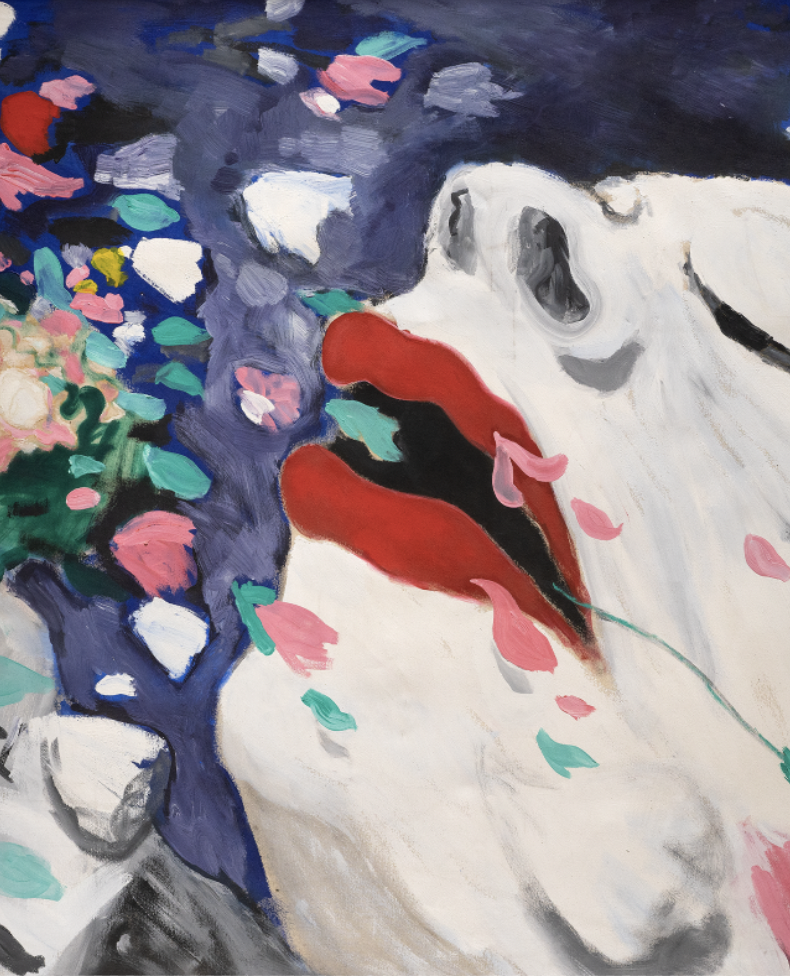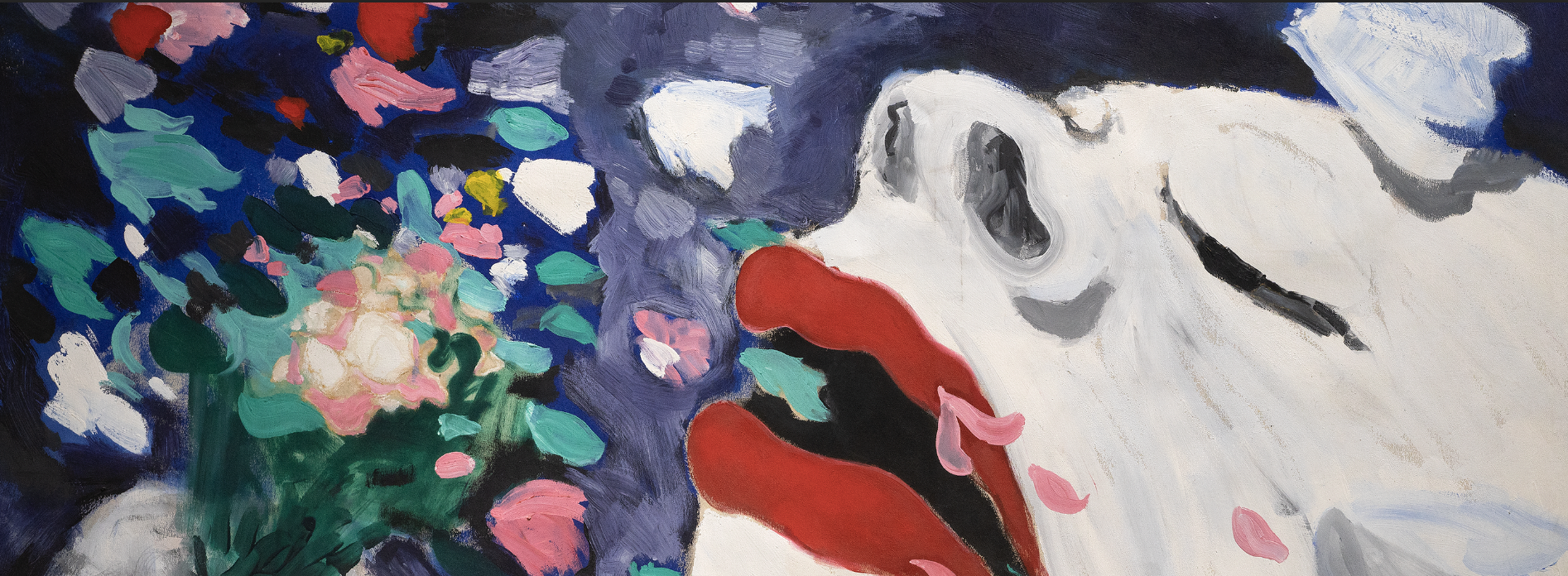
Feel free to add tags, names, dates or anything you are looking for


Stand Against, one of the most iconic performances in the recent history of Georgian art, was witnessed by random passersby through a window of the underground passage at Tbilisi’s Kolkhoz Square on a depressing day in 1991. The living sculptures Oleg Timchenko and Niko Tsetskhladze, who had painted their faces gold, stood motionless like mannequins behind a shop window until finally breaking the glass, getting out and walking away. At that time, very little was known in Georgia about performance art, and there were also very few people who would analyze and talk about it. The public had no opportunity to find out about performance art, reflect on it, and later express an opinion. One can even say that the artists themselves were not fully conscious of their actions. Their motivation was fueled by a desire to speak the language of modern art, which was perceived at the local level as something completely foreign. In any case, this work evidenced the artists’ high sensitivity and intuition, conveying the main message through visual and bodily gesture: the stagnating society, which was locked in its own problems, needed to take an aggressive step and even break glass in order to overcome barriers. A little later, when Georgian art of the 1990s became a subject of research, Stand Against was accorded more recognition and acknowledged as an important cultural event of that period.
_(1).jpeg)
Stand Against, performance by Oleg Timchenko and Niko Tsetskhladze, film still, Tbilisi, 1991
Oleg Timchenko is one of the strongest figures of the group formed during Perestroika under the name of the “Tenth Floor.” His work is extremely diverse and sensitive, with poetry being one of its main features. He constantly demonstrates an incredible ability to transform, when brusque and aggressive gestures may be followed by very romantic and sentimental moods. The series Nostalgia (2004) focuses on one of the most favorite topics of Oleg Timchenko's fans. It unites a collection of small canvases depicting the old quarters of the city. The paintings are deeply emotional, and refer to the feelings that are evoked in a person when seeing his childhood house, street, or yard after a long period of time, bringing back memories and reviving almost forgotten stories. Created through the application of mixed techniques, they offer a very precise manifestation of the atmosphere: cold weather, a street scene at dusk, plants, and the complex details of old buildings.
Oleg Timchenko. Nostalgia Series. Canvas, oil. 50x70. 2004
Oleg Timchenko. Nostalgia Series. Canvas, oil. 50x60. 2004
Oleg Timchenko. Nostalgia Series. Canvas, oil. 50x60. 2007
In Oleg Timchenko's works, nature is shown through allusions to the traditions of symbolist art. They present a mysterious world of fairy tales and their spiritual moods, vague characters that hide a secret, a strange pervasive sense of suspense and fear, certain expectations, eroticism, and magic visions. In these compositions one may find Baroque motifs and their peculiar angles, luxurious details, a mix of the real and mythological, as well as spectacular contrasting effects.
Oleg Timchenko. Dwarf. Canvas, oil. 70x55. 1990s. This work is part of ATINATI Private Collection
Oleg Timchenko. Prince-Tiger. Canvas, oil. 130x140. 1990
Oleg Timchenko, The Secret of the Wood. Canvas, oil. 150x200. 2006
Oleg Timchenko. Prince. Canvas, oil. 200x170. 1990. This work is part of ATINATI Private Collection
Oleg Timchenko. Harem (Day). Canvas, oil. 50x60. 2006. This work is part of ATINATI Private Collection
Oleg Timchenko's poetic paintings portray grave historic episodes, and periodically depict various images of war, fighters, power, and transmit laconic and sharp messages that are somehow "softened" in a pop-art, grotesque manner without diminishing their level of drama.
Oleg Timchenko. King. Cardboard, mixed media. 80x100. 1987. This work is part of ATINATI Private Collection
Oleg Timchenko. Victoria. Canvas, acrylic. 220X250. 2013
Oleg Timchenko ‘Clown’. Canvas, oil. 145X197. 1998. This work is part of ATINATI Private Collection
Oleg Timchenko. From the Series - Postcards. Canvas, acrylic. 170x120. 2019. This work is part of ATINATI Private Collection
Oleg Timchenko once again returned to the topic of power in a performance format during the opening of the Artisterium 3 exhibition in 2013 (location: Tbilisi History Museum - Caravanserai). He did it without prior announcement, inducing in this way the powerful effect of surprise. The appearance of the sophisticatedly well-dressed artist (including Rolex watch and stretch limousine), accompanied by genuine security guards, charmed the entire public. He “visited” the exhibition as an imposing official observing the works from the required distance while no one was allowed to approach him. The conceptual part of the performance included a genuine contract with a real company that carried out its duties in an impeccable manner. The performance set strong overtones and raised relevant questions on topics such as the symbols of power in an art space, institutions and art, financial support, the creative act, sponsors, etc.
Oleg Timchenko. Sad Angel. Canvas, acrylic. 250x220. 2013
Oleg Timchenko. Lovers. Carton, acrylic. 100x150. 2020. This work is part of ATINATI Private Collection
Oleg Timchenko. Birches. Canvas, oil. 200x220. 2012
Poetic and mystical compositions belong to the ultimate foundations of the works of the highly prolific artist, Oleg Timchenko, where they appear periodically through new themes of coloristic resources, expressions, and approaches. Interpretations of the mystical iconography of fairy-tale creatures, angels, unknown mythological bodies, and the meditative nature are always focused on existential meanings, human feelings and experiences, and remain openly humanistic.
Oleg Timchenko. Untitled. Canvas, acrylic. 210x170. 2023. This work is part of ATINATI Private Collection
Oleg Timchenko. Untitled. Acrylic, canvas. 170X140 cm. 2023